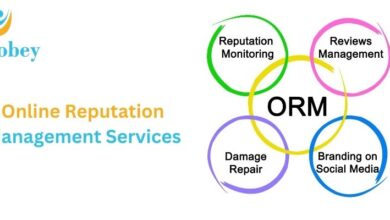Strategies for Effective PR Crisis Management
Embarking on the intricate dance of Public Relations (PR) in the dynamic realm of business and communication unveils both aspirations for a positive brand image and the inevitable reality of unforeseen challenges. It is within these challenges that the art of PR crisis management unfolds—a strategic endeavor to mitigate damage, preserve reputation, and emerge stronger from turbulent times.
Unveiling the Essence of Professional Crisis Management
Beyond mere damage control, PR crisis management is a nuanced strategy encompassing preemptive planning, rapid response, and impactful communication. The diverse forms a crisis may take, ranging from negative public perception and social media backlash to legal quandaries and product recalls, necessitate not only weathering the storm but also leveraging the crisis for growth and improvement.
The Foundation: Preemptive Measures
The journey into successful and professional crisis management commences long before the crisis materializes. Companies adopting preemptive measures lay the groundwork for adeptly navigating challenges. This involves:
Risk Assessment:
A thorough risk assessment identifies potential vulnerabilities, both internal and external, allowing organizations to proactively address issues before they escalate.
Crisis Communication Plan:
A meticulously developed crisis communication plan delineates roles, responsibilities, and communication channels, ensuring a cohesive response during a crisis. This plan encompasses drafting holding statements, preparing spokespersons, and establishing clear communication lines.
Media Training:
Investing in media training for key personnel proves invaluable. Spokespersons equipped with skills to handle interviews, manage tough questions, and deliver consistent messages aligned with the company’s values are indispensable.
The Critical Window: Swift Response
In the swift-paced digital age, time becomes a critical factor. A delayed response amplifies the impact of a crisis. Swift action involves:
Assessing the Situation:
Upon the crisis’s emergence, a thorough assessment is the initial step. Understanding the nature and scope of the problem informs subsequent decisions.
Activating the Crisis Team:
Prompt activation of the crisis management team, a pre-assembled group of experts from various departments, ensures a coordinated effort and prevents delays in decision-making.
Communication Protocols:
Adhering to the crisis communication plan, organizations must communicate transparently and authentically. Social media, press releases, and direct communication channels should convey a unified message.
Crafting a Professional Crisis Management Team
The effectiveness of crisis management rests on the competency of the team in charge. A well-structured crisis management team typically includes:
Spokespersons:
Individuals with strong communication skills and a deep understanding of the company’s values.
Legal Experts:
To navigate any legal implications arising from the crisis.
Media Relations Specialists:
Professionals adept at managing media inquiries and shaping public perception.
Customer Service Representatives:
Front-line responders capable of addressing concerns and maintaining customer relations.
PR Professionals:
Experienced PR practitioners who can develop and execute effective communication strategies.
Assessment and Learning: Transforming Crisis into Opportunity
Post-controlling the immediate crisis, the focus shifts to assessment and learning. This involves:
Post-Crisis Evaluation:
Analyzing the crisis response identifies strengths and weaknesses, ensuring continuous improvement. What worked well, and what could be enhanced for future crises?
Reputation Repair:
Implementing reputation repair strategies, such as showcasing corporate responsibility initiatives, aids in rebuilding trust with stakeholders.
Adapting the Crisis Plan:
Updating the crisis communication plan based on lessons learned ensures the organization is better prepared for future challenges.
Case Studies in Effective PR Crisis Management
Examining real-world examples of companies that adeptly navigated crises provides valuable insights. From Tylenol’s response to product tampering in the 1980s to Johnson & Johnson’s transparent communication, numerous lessons can be gleaned from those who faced adversity and emerged stronger.
In Conclusion: A Continuous Journey
In conclusion, it’s crucial to recognize that unexpected PR mishaps can throw us for a loop. Business news articles are typically digested swiftly—neither catastrophic nor the worst-case scenario imaginable. Nevertheless, having a well-defined course of action in high-pressure situations is of paramount importance.
To kick things off, I suggest closely monitoring online forums associated with your brand. Subsequently, formulate a strategy for addressing a potential PR predicament. Crafting a thoughtfully considered plan typically entails incorporating seven key components, as elaborated in my earlier discussion.
Journey Ingrained
PR crisis management transcends a one-time task; it is a continuous journey ingrained in an organization’s culture. Companies fostering transparency, investing in preemptive measures, and viewing crises as opportunities for growth are better positioned to weather storms and emerge with their reputation intact. The evolving nature of business and communication demands a proactive and adaptive approach to PR crisis management, rendering it an indispensable aspect of corporate strategy in the 21st century.
Source: https://freepsports247.com/2023/11/25/professional-crisis-management/



